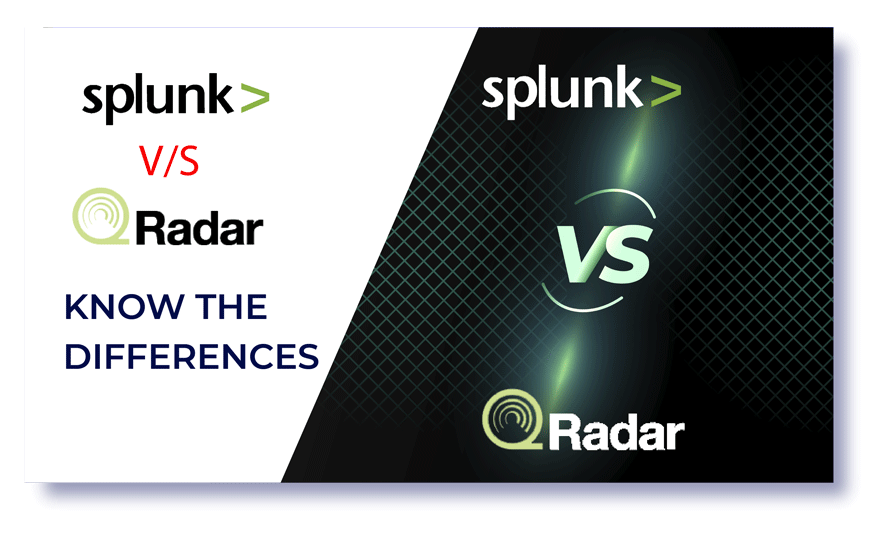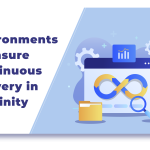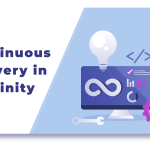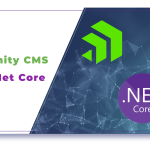
Splunk vs QRadar – Know the differences
In this article, we will be attempting to understand and learn more about Splunk and QRadar on what they are, what they have to offer, how do they differ from one another, and how to choose one of them for your varied requirements. Let us get started.
What is SIEM?
SIEM is a comprehensive system that gathers event information from many sources including security software, network infrastructure, appliances, and many other applications.
SIEM is a combination of the Security Information Management (SIM) system which collect, store, analyze, investigate, and record the log information for forensics, regulatory compliance, and the Security Event Management (SEM) system to examine the data to detect future breaches and prevent them in advance before they cause any harm to the organization.
IBM Qradar Vs Splunk
IBM QRadar and Splunk are two of the top SIEM solutions which provide comprehensive Event and incident monitoring solutions. When one attempts to carry out a comparison of both products, it should take place based on four major factors
-
Compatibility
While IBM Qradar seems to work optimally with other IBM products, such as IBM Watson, Splunk is an independent entity that is compatible with other components inside the system. As part of the recent QRadar enhancements with Watson, you can analyze networks for threats using improved QRadar network insights. Furthermore, IBM QRadar also provides advanced security for Microsoft Azure infrastructure, Amazon Web Services, and Office 365. However, Splunk is well integrated with Splunk User Behaviour Analytics (Splunk UBA), which helps detect hidden threats. Moreover, it combines its capabilities with advanced machine learning tool kits that enable better insights into unknown threats.
-
The Usage Model
QRadar SIEM capacity can be measured in terms of the number of events per second. Due to the data nodes’ scalability, an unlimited number of data nodes can be added. The Splunk system, on the other hand, can be deployed based on per-byte consumption and is scalable up to several petabytes per day.
-
Deployment
QRadar is available as hardware or software on-premises or in the cloud. Smaller businesses can deploy it on the IBM cloud, while large businesses can deploy it on their own hardware systems. You can deploy Splunk ES as software on-premises no matter whether you are using a private or public cloud, or a hybrid deployment. It can also be implemented as software on-premises, as a SaaS solution with Splunk cloud. Most customers find it to be a popular choice.
-
Matters of Pricing
The IBM QRadar’s usage is determined by the number of events per second. You can choose from two different variants, one of which is on-premises and starts at $10,400 per year, and the other is cloud-based and starts at $800 per month. Additionally, You can also get QRadar’s community edition, low-EPS edition, and low-memory edition for free. Splunk is no more selling its perpetual licensing model, so the customers have 2 Licensing options terms and cloud licensing. A term license for 50 GB/day can cost around 18000 yearly. You can utilize the cost calculator https://splunkpricing.com/ (a third-party tool, cannot guarantee the correctness of the result). A free version of Splunk is available for a single user and up to 500 MB of data per day.
Why you should consider QRadar?
The QRadar SIEM platform offers extensive and versatile out-of-the-box (templated) content for a wide range of use cases. This allows administrators to handle installation without having to start from scratch.
Qradar provides a robust ecosystem of integrations with IBM security portfolio solutions (such as IBM QRadar Advisor with Watson, IBM Resilient, or the free UBA module) and content created by third parties (communities, security, and IT vendors) accessible via IBM QRadar’s marketplace. Watson’s AI is a huge selling point by itself.
QRadar User Behavior Analytics is a free module designed to address some use-cases of insider threats. It supports forensic investigations with IBM QRadar Incident Forensics. IBM QRadar Advisor with Watson automates the process of determining the root cause of identified threats. As part of IBM QRadar’s value proposition, IBM QRadar customers can access the IBM Security App Exchange, where they can download content developed by IBM or third parties to extend IBM QRadar’s coverage. Contains a large number of application-flow signatures for parsing network data and support for network data monitoring.
Why you should consider Splunk?
Splunk’s Security Operations Suite is centrally managed and has an easy-to-use interface. The platform is consisting of Splunk Enterprise along with three solutions:
- Splunk Enterprise Security (ES),
- Splunk User Behavior Analytics (UBA) and
- Splunk Phantom
Splunk Enterprise intends towards providing event and data collection, search, and visualizations for various uses in IT operations and some security use cases. Security monitoring-specific capabilities are provided by the premium ES solution, including security queries, visualizations, dashboards, case management, workflow, and incident response capabilities. Additionally, UBA offers machine learning (ML)-driven, advanced analytics. The SOAR capabilities offered by Phantom are impressive. One can also get to avail additional apps with security use cases via Splunkbase.
There are three major improvements to Splunk ES:
- support for guided investigation via the Investigation Workbench UI,
- rapid content updates for ES and UBA,
- speed improvements.
In addition to Splunk Enterprise’s basic event collection and simple use cases, Splunk ES is a rich SIEM offering with sophisticated analytics, while UBA is a better option for advanced analysis, and Phantom delivers SOAR capabilities.
While Splunk has a strong ecosystem of technology integrations available in its application marketplace, users of competing products (for instance, in user analytics) should validate the degree of integration with Splunk. A strong PII protection component is available; obfuscation and PII masking can be applied at the field level, based on various characteristics, such as user identities and locations.
Conclusion
Investing in improving the security of an organization is essential for its growth and development in the long run. Data breaches cause huge damage to organizations in terms of money and reputation. You will get to know more about these and develop an understanding of the products by selecting its free version or by availing of the trial version of both. By trying out both IBM QRadar and Splunk, you can go on to select one that suits your needs better.





